by Mark Tancig | Aug 1, 2017
Florida’s panhandle has received quite a bit of rain this summer. In the last three months, depending on the location, approximately 15 to 35 inches of rain have come down, with the western panhandle on the higher end of that range. In addition to the rain, we all know how hot it has been with heat index values in the triple digits. And who can forget the humidity?! Well, these weather conditions are just the right environmental factors for many types of fungi, some harmful to landscape plants, most not.
In the classification of living things, fungi are divided into their own Kingdom, separate from plants, animals, and bacteria. They are actually more closely related to animals than plants. They play an important role on the Earth by recycling nutrients through the breakdown of dead or dying organisms. Many are consumed as food by humans, others provide medicines, such as penicillin, while some (yeasts) provide what’s needed for bread and beer. However, there are fungi that also give gardeners and homeowners headaches. Plant diseases caused by various fungi go by the names rusts, smuts, or a variety of leaf, root, and stem rots. Fungal pathogens gardeners may be experiencing during this weather include:
- Gray leaf spot – This fungus can often show up in St. Augustine grass lawns. Signs of this fungus include gray spots on the leaf (very descriptive name!). This disease can cause thin areas of lawn and slow growth of the grass.
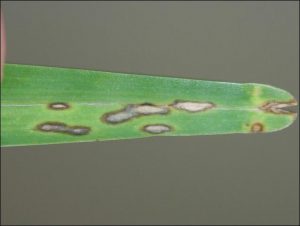
Gray leaf spot on St. Augustine grass. Credit: Phil Harmon/UF/IFAS.
- Take-all root rot – This fungus can attack all our warm-season turfgrasses, and may start as yellow leaf blades and develop into small to large areas of thin grass or bare patches. The roots and stolons of affected grasses will be short and black.
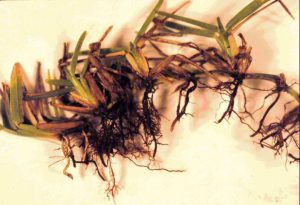
Signs of take all root rot. Credit: UF/IFAS.
Powdery mildew – This fungus can be found on many plants, from roses to cucumbers. It looks like white powder on the leaves and can lead to plant decline.
- Armillaria root rot – This fungus can infect a variety of landscape plants, including oaks, hickories, viburnums, and azaleas. Symptoms can include yellowing of leaves and branch dieback, usually in adjacent plants. Old hardwood stumps can harbor this fungus and lead to the infection of nearby ornamentals.
Because fungi are naturally abundant in the environment, the use of fungicides can temporarily suppress, but not eliminate, most fungal diseases. Therefore, fungicides are best used during favorable conditions for the particular pathogen, as a preventative tool.
Proper management practices – mowing height, fertilization, irrigation, etc. – that reduce plant stress go a long way in preventing fungal diseases. Remember that even the use of broadleaf specific herbicides can stress a lawn and exacerbate disease problems if done incorrectly. Since rain has been abundant, irrigation schedules should be adjusted to reduce leaf and soil moisture. Minimizing injury to the leaves, stems, and roots prevents stress and potential entry points for fungi on the move.
If you think your landscape plants are suffering from a fungal disease, contact your local Extension Office and/or visit the University of Florida’s EDIS website at http://edis.ifas.ufl.edu for more information.
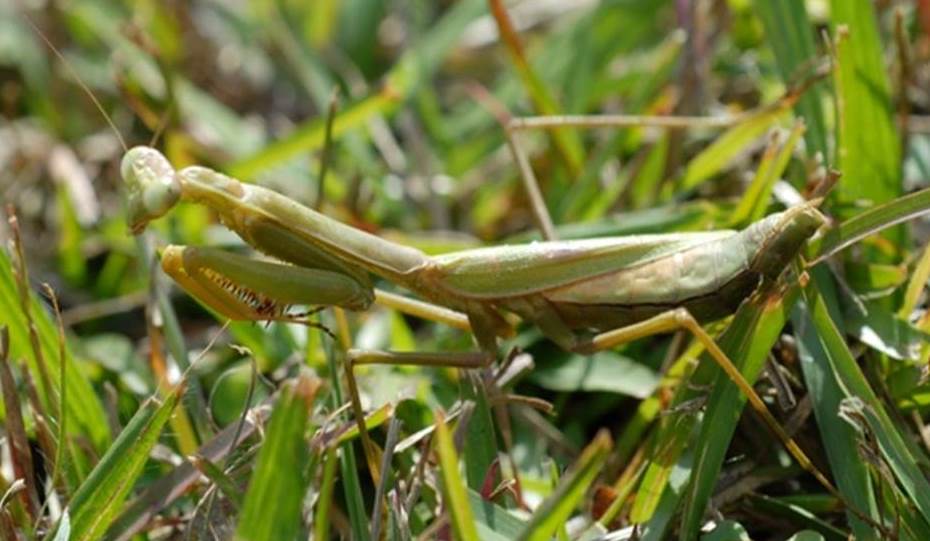
by Les Harrison | Jul 14, 2017

Praying Mantis, Image Credit Les Harrison
Summertime is bug time in the Florid Panhandle. The weather has provided enough rain for the bugs which depend on a supply of foliage and the temperatures have been ideal for a population explosion.
Stink bugs, leaf-footed bugs, grasshoppers, all sizes and colors of caterpillars and many more have been enjoying the lush and plentiful dining options. More than one Panhandle homeowner or gardener has been plagued by the sudden appearance of a hoard of hungry nuisances which are eyeing the menu choices at residences.
Fortunately, nature has a way of eventually balancing all situations when left to its own devices. With the increase of the plant eaters comes a surge in those insects which restrain the excess population.
One of the most easily recognized predator insects is the praying mantis. This beneficial insect is actually a family with multiple members, some of which have been introduced to Florida.
While there are over 2400 mantis members worldwide, Florida is home to eleven. Two of those exotics have been introduced from other regions, but considered non- invasive.
Mantises are thought to have evolved during the Cretaceous period about 100 million years ago, possibly from a predatory cockroach with similar front legs. Their closest surviving insect relatives are cockroaches and termites, both of which they will consume if given the opportunity.
Like many insects, the mantis is equipped with a tough, durable exoskeleton which provides a basis for successful close quarter combat and meal procurement. These hunters have three other advantages which create a severe vulnerability in their prey’s defense and potential for surviving a mantis encounter.
The mantis is an ambush predator which will lay in wait for the victim/meal to deliver itself. The mantis has the instinctive ability to identify and hide in areas with high amounts of prey species traffic.
This insect is a master at stealth and camouflage. The creature’s coloration and linear shape allow it to blend into the earth tones of many settings.
To complement its ability to conceal itself in plain sight, the mantis can hold perfectly still and patiently wait for the oblivious bug to bumble into sticking range. At that precise moment, the mantis is a blur of lethal motion.
The mantis’ forelimbs are a set of deadly spiked vices used to immobilize and secure its target. It extends these spiny levers forward in a raised position which appears as though it is in a mealtime prayer, hence its name.
The kill technique is to impale and restrain the victim with a single stroke of the forelimbs while holding the victim securely to the mantis’ body. On occasion the attempt fails and the mantis has to apply a more direct approach.
This insect’s beak is designed for slicing and tearing its victim’s body. Its jaw muscles provide the power to effectively employ this tool.
Depending on its stage of live, the mantis will eat a wide variety of creatures. Early stage mantises will eat little flies and other tiny insect (including its siblings), but at maturity they will take on small reptiles and amphibians along with a variety of destructive insects.
Female mantises will even consume their prospective mates. Despite its vicious and cannibalistic nature, the praying mantis is the answer to many gardeners’ prayers.
To learn more about praying mantises and other beneficial insects, check out this EDIS site with many articles on various species of beneficial insects.
by Sheila Dunning | May 25, 2017
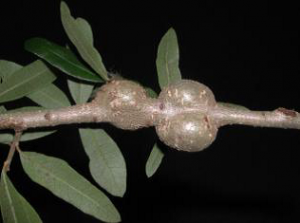 As oak trees are now fully leafing out and people start hanging out in the shade of the canopy, many of you are noticing strange growths on the branches. They look like potatoes, spiky cones and fuzz balls on the leaves and stems. Don’t worry. It’s just a harmless wasp that chose that tree to create a nursery for her young.
As oak trees are now fully leafing out and people start hanging out in the shade of the canopy, many of you are noticing strange growths on the branches. They look like potatoes, spiky cones and fuzz balls on the leaves and stems. Don’t worry. It’s just a harmless wasp that chose that tree to create a nursery for her young.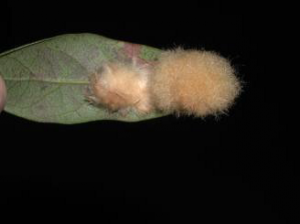
Galls are abnormal plant growth or swellings comprised of plant tissue. Galls are usually found on foliage or twigs. These unusual deformities are caused by plant growth-regulating chemicals produced by tiny wasps. The chemicals produced by these insects interfere with normal plant cell growth.
The life cycles of the various gall-forming wasps are highly variable. Two or more years are required for gall wasps that develop in woody twig galls to reach maturity. Gall-forming wasps usually overwinter as adults in protected places away from the host tree. As the buds break in the spring and the leaves begin to expand, these small wasps start to lay their eggs in expanding plant tissue. During the egg-laying process or early larval-feeding period, specialized body glands secrete growth-regulating chemicals that interact with certain plant chemicals to produce these abnormal growths.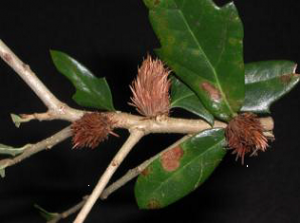
After a brief period of cell growth, gall development stops completely. Once these galls are formed, they do not continue to use nutrients from the host plant. The insect is confined within “its house” and feeds only on gall tissue during the remainder of its development. The galls provide shelter, protection, and food for the immature wasps. Inside a gall, the larvae are surrounded by tissues rich in nutrients
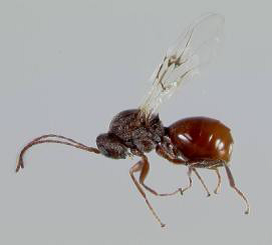 There are a variety of gall-forming species of small wasps that commonly infest oak, Quercus spp ., trees. Galls generally are aesthetically objectionable to homeowners who find them unattractive and fear that galls will cause damage to the health of their oak trees. Most leaf galls on oak cause little or no harm to the health of a tree. However, twig or branch galls may cause injury by distorting branch development in a heavily infested tree.
There are a variety of gall-forming species of small wasps that commonly infest oak, Quercus spp ., trees. Galls generally are aesthetically objectionable to homeowners who find them unattractive and fear that galls will cause damage to the health of their oak trees. Most leaf galls on oak cause little or no harm to the health of a tree. However, twig or branch galls may cause injury by distorting branch development in a heavily infested tree.
Chemical control is seldom suggested for management of leaf galls on oak. Cultural methods of control may be effective in reducing the impact of these insects. Some fallen leaves may harbor various life stages of gall-producing pests. Therefore, it may be useful to collect and destroy all infested leaves. Some of these pests overwinter in twigs and branches of oak. Where such woody galls are detected, prune and destroy the infested plant material when the galls are small and have just started to develop. But, remember every bug needs a home!
All photos by Eileen Buss, UF Entomologist
by Larry Williams | May 11, 2017
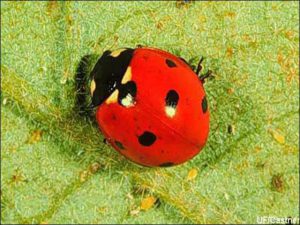
Adult Ladybug. Photo Credit: James Castner University of Florida
A number of summers ago, I noticed whiteflies on a confederate rose plant in my landscape. I considered using an insecticide to control the whiteflies but decided against doing so after taking a closer look. What I found was a population of ladybugs – eggs, larvae, pupae and adults.
Ladybug adults and larvae eat whiteflies, as well as other soft-bodied insects such as aphids. So, I waited to see what would happen.
At first I was seeing mostly adult whiteflies, which look like tiny white moths. Adult whiteflies mate and then lay eggs on the underside of leaves. The eggs hatch into flat translucent scale-like nymphs that suck the “juice” from the underside of the leaves.
Eventually, some of the leaves developed a black coating called sooty mold. As certain insects (primarily aphids, some scales and whiteflies) feed, they excrete plant sap that coats the leaves. Sooty mold then grows on this sugary sap. It’s not a pathogen. It just makes the leaves look ugly.
Knowing that the whiteflies would not kill the confederate rose, I was willing to tolerate the sooty mold and allow the ladybug population to build.
Allowing whiteflies to live on your plants may not always be the best option. But in order to have beneficial insects in your landscape, there must be some “bad” insects for them to eat.
Insects such as ladybugs, lacewings and praying mantises eat many pest insects. Encouraging these beneficial insects can allow you to reduce the amount of pesticides applied.
It’s important to learn to recognize the adult and immature stages of these beneficial insects. Ladybugs have larvae that look nothing like
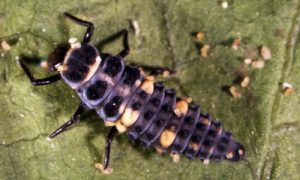
Ladybug larva. Photo credit: Aristizabal University of Florida
the adults. Some ladybug larvae look like small orange and black alligators. Others may resemble mealybugs. Many gardeners that would never kill adult ladybugs mistake their larvae as pests and kill them with insecticides.
The following UF/IFAS Extension website will help you learn to recognize many of our beneficial insects. http://edis.ifas.ufl.edu/topic_beneficial_insects
Once you find beneficial insects in your landscape, reduce or eliminate the use of insecticides. When an insecticide is needed, use environmentally friendly options such as insecticidal soaps, horticultural oils and products that contain Bacillus thuringiensis (Bt).
Sometimes a heavy stream of water from a water hose is all that is needed to remove pest insects from plants and reduce their numbers to an acceptable population.
Remember, leaving a few pest insects is a great way to attract beneficial insects. Tolerating a minor infestation and a little plant damage will benefit the helpful insects, your pocketbook and the environment.
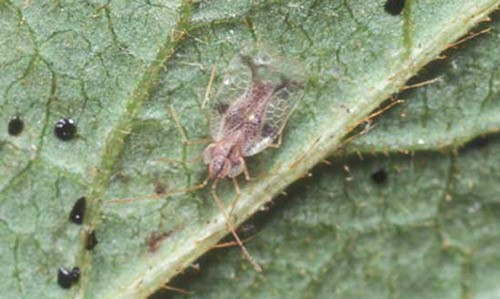
by Sheila Dunning | Mar 20, 2017
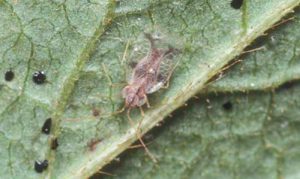 Now is the time to prevent your azaleas from being attacked by lace bugs. The azalea lace bug, Stephanitis pyrioides, overwinters as eggs on the underside of infested leaves. Eggs hatch in late March and early April. The insect then passes through five nymphal instars before becoming an adult. It takes approximately one month for the insect to complete development from egg to adult and there are at least four generations per year. Valuable plants that are susceptible to lace bug damage should be inspected in the early spring for the presence of overwintering lace bug adults, eggs and newly hatched nymphs. Inspect these plants every two weeks during the growing season for developing lace bug infestations.
Now is the time to prevent your azaleas from being attacked by lace bugs. The azalea lace bug, Stephanitis pyrioides, overwinters as eggs on the underside of infested leaves. Eggs hatch in late March and early April. The insect then passes through five nymphal instars before becoming an adult. It takes approximately one month for the insect to complete development from egg to adult and there are at least four generations per year. Valuable plants that are susceptible to lace bug damage should be inspected in the early spring for the presence of overwintering lace bug adults, eggs and newly hatched nymphs. Inspect these plants every two weeks during the growing season for developing lace bug infestations.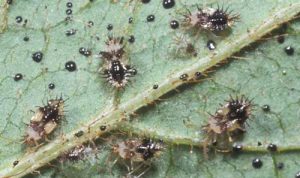
Both adults and nymphs have piercing-sucking mouthparts and remove sap as they feed from the underside of the leaf. Lace bug damage to the foliage detracts greatly from the plants’ beauty, reduces the plants’ ability to produce food, decreases plant vigor and causes the plant to be more susceptible to damage by other insects, diseases or unfavorable weather conditions. The azalea can become almost silver or bleached in appearance from the feeding lace bug damage.
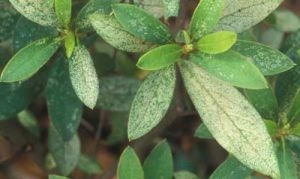 However, lace bugs often go undetected until the infested plants show severe damage sometime into the summer. By then several generations of lace bugs have been weakening the plant. Inspecting early in the spring and simply washing them off the underside of the leaves can help to avoid damage later and the need for pesticides.
However, lace bugs often go undetected until the infested plants show severe damage sometime into the summer. By then several generations of lace bugs have been weakening the plant. Inspecting early in the spring and simply washing them off the underside of the leaves can help to avoid damage later and the need for pesticides.
Adult lace bugs are flattened and rectangular in shape measuring 1/8 to 1/4 inch long. The area behind the head and the wing covers form a broadened, lace-like body covering. The wings are light amber to transparent in color. Lace bugs leave behind spiny black spots of frass (excrement).
Lace bug nymphs are flat and oval in shape with spines projecting from their bodies in all directions. A lace bug nymph goes through five growth stages (instars) before becoming an adult. At each stage the nymph sheds its skin (molts) and these old skins often remain attached to the lower surface of infested leaves.
Azalea lace bug eggs are football-shaped and are transparent to cream-colored. Lace bug eggs are found on the lower leaf surface, usually alongside or inserted into a leaf vein. Adult females secrete a varnish-like substance over the eggs that hardens into a scab-like protective covering.
For more information go to: http://entomology.ifas.ufl.edu/creatures/orn/shrubs/azalea_lace_bug.htm
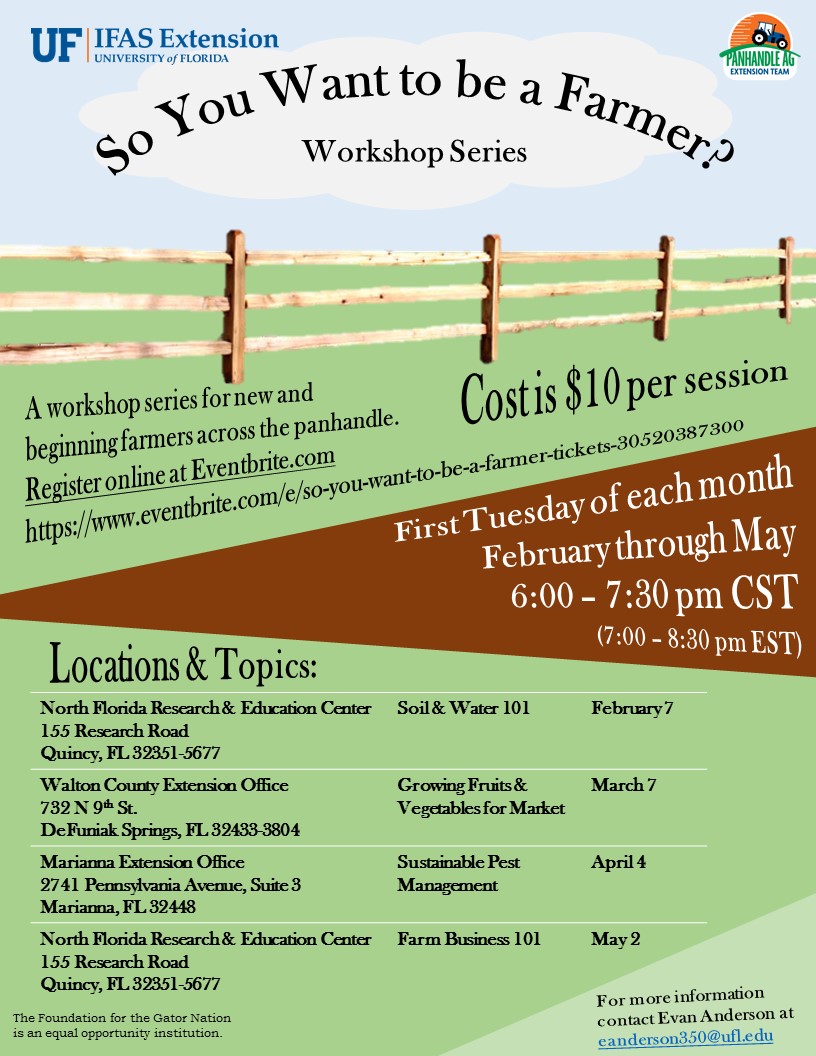
by Molly Jameson | Jan 26, 2017
Are you an avid gardener and looking to step it up a notch? Are your gardening eyes bigger than your dinner plate? If you have ever considered selling your bounty for market, you will certainly need to do your homework! One such step you can take is to attend the UF/IFAS Panhandle Extension Team’s So You Want to be a Farmer? Workshop Series.
There’s a lot to know if you want to get into this business! This series aims to introduce new or potential farmers to innovative and environmentally safe production practices, concepts of soil and water management, integrated pest management, how to grow for a farmers’ market, and farm financial management.
Agricultural professionals are actually in high demand. There is an estimated 60,000 highly skilled jobs in agriculture available annually, but only about half of these positions are being filled by graduates in agricultural fields. Additionally, Florida’s farmers are an aging group, and there was an 8% decrease in the number of farms and 26% decrease in acres of cropland from 2002 to 2012.
Fortunately, demand has greatly increased in recent years for locally produced specialty crops, meats, and dairy. There has also been an increase in the number of direct marketing opportunities and small farmers have been able to adopt new technologies, such as season extension techniques and local online marketing, to generate more revenue on small acreages.
The UF/IFAS Extension Panhandle Agriculture Team is hosting the So You Want to be a Farmer? Workshop Series to assist beginning or novice farmers as they navigate the many challenges of getting started.
If you are interested in attending, please register on the So You Want to be a Farmer? Eventbrite page. The cost is $10 per session, with sessions at multiple locations within the east Florida Panhandle.
Please see workshop dates and further details below:















